In their final year, Bachelor of Science majors complete either a Senior Design Project or an Enterprise project. Many of these projects are presented by students at Design Expo, an annual competition that highlights hands-on, discovery-based learning at Michigan Tech. During the event, more than a thousand students in Enterprise and on Senior Design teams showcase their work and compete for awards.
The annual Design Expo is Michigan Tech’s annual showcase for experiential, discovery-based learning. Each spring the event showcases the work of more than 1,000 students from Enterprise and Senior/Capstone Design programs. Student teams from all five Colleges: Business, Computing, Engineering, Forest Resources and Environmental Science, and Sciences and Arts were represented. The 2022 Design Expo is generously supported by industry and university event sponsorship. View all Design Expo 2022 Enterprise entries here.
2024 Senior Design Projects
Automated Data Collection in a Foundry Environment
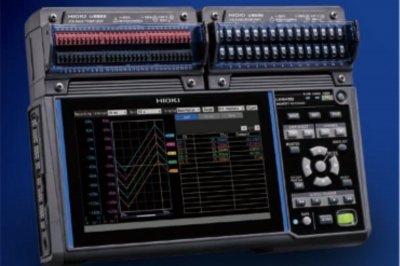
Team Members: Haylah Buell, Electrical Engineering Technology; Eddie Carrothers, Electrical Engineering Technology
Advisors: Ashraf Saleem, Applied Computing; David Labyak, Mechanical Engineering Technology
Sponsor: AIST, American Institute of Steel and Technology
Project Description: The goal of this project is to set up an automated data collection system for the MTU foundry. This system will need to be simple to use, hard for users to make a mistake, and able to withstand the foundry environment. Along with doing all the necessary research to find a data logger that would meet the requirements of the customer, we set up quick settings so the program would be easy to use and code that would automatically take the recorded data and output it into an Excel document of measurements and visual graphs for each thermocouple. We also came up with a secure carrying case for the data logger along with installing electrical ports on the side so the data logger could be used without needing access to the physical device, thus limiting the possibility of it being damaged.
Cybersecurity Law - Digital Rights and Privacy
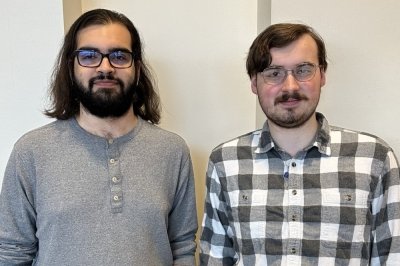
Team Members: Dawson Utley, Cybersecurity; Sean Ulicny, Cybersecurity
Advisor: Victoria Walters, Applied Computing=
Project Description: The goal of the Cybersecurity Law project is to create and submit a data rights and privacy bill to the Michigan legislature. The basis of the law will be derived from an analysis of existing bills of other states and related resources. An initial document will be crafted with regard to the research and the group’s outlook on what should be a part of a potential law. Then after contact with members of the legislature, the document will be fleshed out into a proper format for a bill. Afterward, the bill is to be introduced to the legislature, with the hope it becomes state law.
Development of PID Tabletop Training System

Team Members: Erik Everse, Mechatronics; Will Ward, Electrical Engineering Technology
Advisors: Ashraf Saleem, Applied Computing; Paniz Hazaveh, Applied Computing
Sponsor: Department of Applied Computing
Project Description: The goal of our project is to fix the lack of hands-on labs provided in EET 2150 and EET 4311. We are seeking to develop a lab that can be placed on a tabletop and give students an opportunity to see the effects of PID controllers. This lab will be utilizing a DC motor that will control a teeter-totter in order to balance a ball in the middle of the teeter-totter.
Industry 4.0
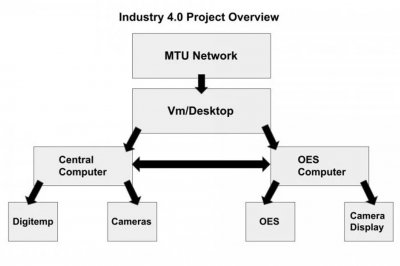
Team Members: Koty Shetler, Electrical Engineering; James Henthorn, Cybersecurity; David Scott, Cybersecurity; Eddie Carrothers, Electrical Engineering Technology; Haylah Buell, Electrical Engineering Technology; Amey Hukkeri, Mechatronics
Advisors: David Labyak, Mechanical Engineering Technology; Ashraf Saleem, Applied Computing; Victoria Walters, Applied Computing
Sponsor: David Labyak, Mechanical Engineering Technolog
Project Description: The goal of the industry 4.0 team is to update several systems in the foundry at MTU to industry 4.0 standards. This means updating all of the processes involved in collecting and receiving data. The focus of this project is on data centralization as the final goal is to have all of the new systems implemented into one environment where data can be pulled from any computer in the foundry. Some of the new systems that are to be implemented include the Digitemp wireless temperature recorder, cameras to record foundry processes for educational purposes, computer replacement and repair, and an upgrade to replace existing data loggers.
Internet Of Things Dashboard
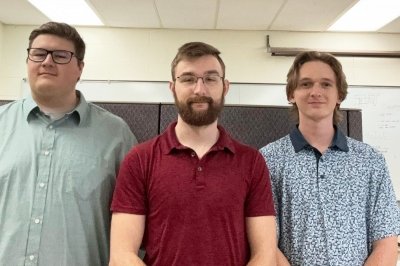
Team Members: Kyle Koenig, Cybersecurity; Matthew Bailey , Cybersecurity; Cole Kahrhoff, Cybersecurity
Advisor: Tim Van Wagner, Applied Computing
Project Description: Our project streamlines IoT device management by consolidating data from distinct device types into a unified dashboard. It allows users to build out modularly and utilize import packages to denote more specific device types and commands. This eliminates the need for system administrators to navigate multiple proprietary platforms for monitoring. By pulling standardized information and statistics from each device and assigning specific tools for specific device types, our solution offers a comprehensive overview, enhancing efficiency and simplifying monitoring processes. This consolidated approach facilitates quicker decision-making and ensures a seamless management experience for information technology administrators.
Network Acquisition & Merge
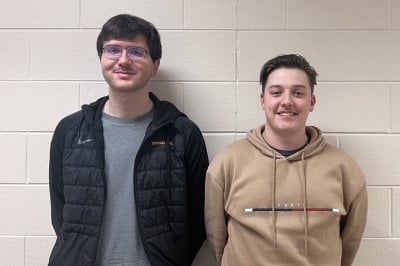
Team Members: Nicholas Djoljevic, Computer Network and System Administration; Trever Sepanik, Cybersecurity
Advisor: Tim Van Wagner, Applied Computing
Sponsor: Heartland Business Systems
Project Description: For our project, we first plan to stand two networks up independently. These two networks will simulate the company MDI and the company being acquired, WCI. We will create these two networks with the equipment supplied by Heartland Business Systems. The networks will consist of server hosts, VoIP phones, and utilize a core/access network architecture.
After the independent networks have been created, we will then initiate the migration. The end goal being seamless communication across both networks under one administrative body. The network will be protected with a Next-Gen Palo Alto Firewall.
RFID Integration with Mobile Devices
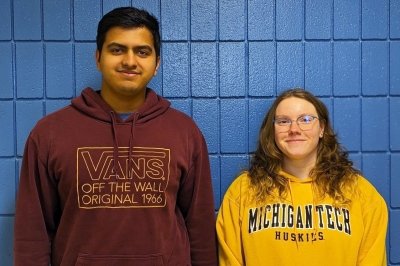
Team Members: Abby Jurewicz, Cybersecurity; Hriteesh Haridas, Cybersecurity
Advisor: Victoria Walters, Applied Computing
Project Description: The goal of our project is researching a way to add a student ID card onto your personal phone. This will then allow you to unlock doors that students have access to. With this we are focusing on how to create a lock that will work with newer phones, NFC built in devices, and an application to add IDs to. We are currently on our final part of the project of building out our test lock and programming automation scripts to use the door lock.
SecureCAN: Enhancing Cybersecurity in Connected Vehicles
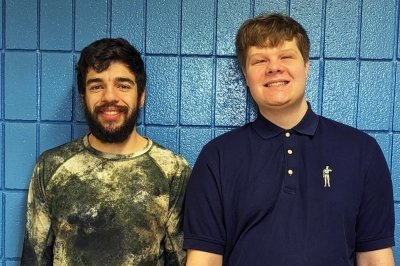
Team Members: Joe Vargo, Cybersecurity; Carter Rutkowski, Computer Network and System Administration
Advisor: Victoria Walters, Applied Computing
Project Description: Connected vehicles rely on the Controller Area Network (CAN) bus for communication between various components such as controllers, sensors, and the infotainment system. The CAN bus is known for its vulnerabilities to Cyber Attacks. Such as: tampering, data breaches, unauthorized access in connected vehicles. Goal of this project is to develop a Cybersecurity solution to protect CANBus data and ensure the safety and privacy of vehicle occupants and/or components.
Siemens Programmable Logic Controller Trainer Kit Development
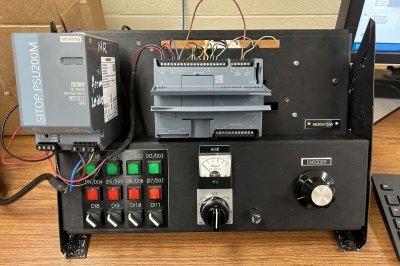
Team Members: Landon Knight, Electrical Engineering Technology; Henry Inyang, Electrical Engineering Technology
Advisor: Nathir Rawashdeh, Applied Computing
Sponsors: Siemens Cooperates with Education; Leidos
Project Description: This project delves into the development of our Siemens S7-1200 Programmable Logic Controller trainer kit that is aimed at enhancing training for introductory industrial automation. Some traditional training modules are due for a revamp to continue with the development of modern and efficient training tools. As such we have developed this project to focus on integrating both existing and new hardware components such as push buttons, lamps, motors, and fans. The main goal is to provide hands-on, practical training that mirrors real-world applications to bridge the gap between theoretical knowledge and practical skills in PLCs. By incorporating elements of interactable hardware and software the training kit aims to prepare future engineers for the challenges of modern industrial automation.
2023 Senior Design Projects
Social Engineering for High School Students - 1st Place

Team Members: Connor Langdon, Cybersecurity, Kayla Blunt, Computer Network and System Administration
Advisors: Tim Van Wagner, Applied Computing, and Victoria Walters, Applied Computing
Project Description: The goal of our project is to develop and deliver social engineering education for high school students in the local area. Through social engineering education, we aim to spread awareness on one of the most common cybersecurity threats, as well as provide resources for reporting the threat and promoting safe practices when emailing, browsing the web, engaging in social media, and answering calls and texts.
Cyber Law in the U.S.
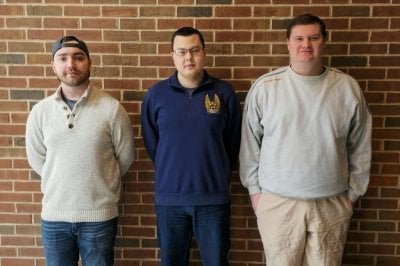
Team Members: Christopher Liberman, Cybersecurity; Nathan Butgereit, Computer Network and System Administration; Mason Servant, Cybersecurity
Advisor: Victoria Walter
Sponsor: College of Computing
Project Description: The goal of our project is to develop a bill specifically for the state of Michigan that addresses shortcomings that exist in current U.S. cyber laws. It follows a similar format to the California Privacy Rights Act (CPRA) and incorporates ideas from the European Union's General Data Protection Regulation (GDPR). The bill is currently in a draft stage.
Updating and Upgrading Labs for Wireless System Administration
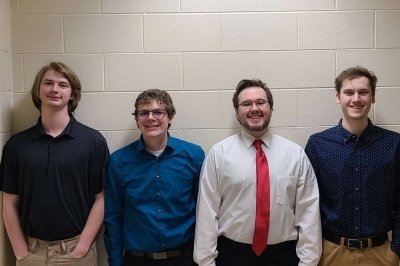
Team Members: Wil Hobkirk, Kevin Doerr, Ryan Martell, Erik Stalsberg Barnett, Computer Network and System Administration
Advisor: Tim Van Wagner, Applied Computing
Sponsor: Michigan Tech
Project Description: The goal of our project is to analyze the lab content of SAT3820 to find outdated and depreciated content and upgrade or replace it as needed. This includes fixing and altering existing labs as well as writing a new curriculum to utilize the array of Ubiquiti radios that were recently donated to the program. The goal of the new lab material is to bring more industry relevant content into the lab space and give wireless students the chance to learn hands-on, practical skills that they can carry on into the workplace. This project is currently in its second phase. In this phase the team is deploying new and altered lab material and receiving feedback from students.
Vehicle Penetration Test
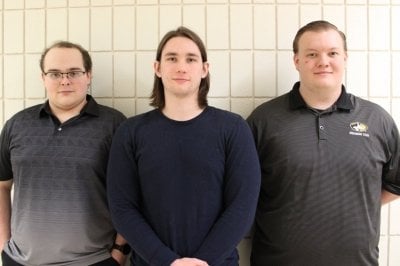
Team Members: Jason Joseph, Cybersecurity; Justin M Reames, Computer Network and System Administration; Ethan Frenza, Computer Network and System Administration
Advisor: Victoria Walter, Applied Computing
Project Description: Our project goal is to investigate the possibility of vulnerabilities with modern automotives. The project focused on the use of data transmissions used by the vehicle and attempting to exploit any vulnerabilities that are identified. Such vulnerabilities involved WiFi, Radio Frequencies, and CAN Bus transmissions. We have finished our testing phase and have found and exploited vulnerabilities in the Radio Frequency transmissions from the Vehicle Car Fobs. However, there is more room to investigate different transmission types in the future.
Voice Spoofing Countermeasure for Voice-Controlled Systems Using Deep Learning
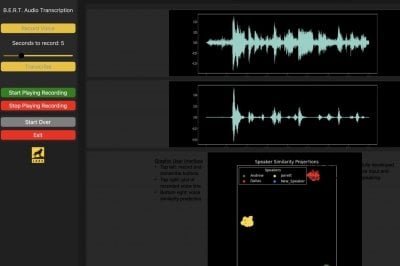
Team Members: Jarrett Buckner, Computer Network and System Administration; Andrew Martin, Cybersecurity; Dallas Grandy, Cybersecurity
Sponsor: College of Computing
Project Description: The goal of our project is to create a protected system that uses primarily voice for authentication, rather than a traditional text password. We developed a Graphic User Interface that takes sound as an input and predicts whether or not a user is authorized to access our system based solely on the characteristics of their voice. In order to accomplish this, we are training a machine learning model for speaker classification using recorded samples of each of our voices. We have also used online AI software to create deep-fake voice lines for each of our voices, which will be used to test how our voice recognition responds to potential cyber-attacks that use fake voices to try and gain unauthorized access to a system such as ours.
Industry 4.0 Consulting
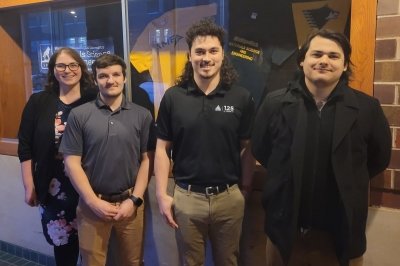
Team Members: Nicole Andress, Cybersecurity; Matt Vongphachanh, Mechanical Engineering Technology
Advisors: David M. Labyak, Manufacturing and Mechanical Engineering Technology; Tim Van Wagner: Computer Network and System Administration
Project Description:
The purpose of team Industry 4.0 is to collect temperature data during the pouring, casting, and testing process in the Michigan Tech foundry. The driving force behind this project is to optimize the use of the foundry data collection for students, staff, and researchers. In this project, the team installed network highways for data to travel while also encrypting data for security. This network installation allowed our team to utilize IoT technology to gather real-time data with tools like an Arduino while syncing to the cloud. With the utilization of IoT devices, we were able to provide ease of access to data through the synchronization of these tools.
2022 Senior Design Projects
IoMT Device Security: 1st Place
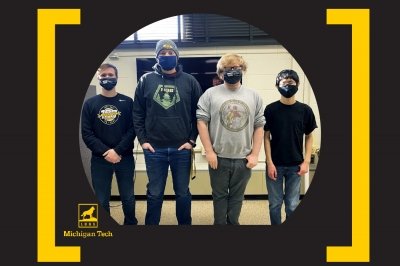
Class of 2022 Cybersecurity graduates Jacson Ott, Stu Kernstock, Trevor Hornsby, and Matthew Chau won First Place in the Senior Design category at the 2022 Design Expo. Check out their winning project below.
Team Members: Jacson Ott, Stu Kernstock, Trevor Hornsby, and Matthew Chau, Cybersecurity
Advisor: Guy Hembroff, Applied Computing
Sponsor: Department of Applied Computing
Project Description: Our team researched the current security of Internet of Medical Things (IoMT) wearable devices. We have tested a wide selection of different smartwatches and accompanying smartphones for a number of different potential vulnerabilities. These include physical attacks, sniffing, man in the middle, dos, reverse application engineering, and more. The main purpose is to identify common weaknesses in security across this field, and to provide suggestions for mediation.
The goal of this project is to test the possibilities of security vulnerabilities between the connection of an Apple Watch and an iPhone. This is relevant because Apple devices are the most popular fitness tracking device on the market, and research shows that Bluetooth is vulnerable to certain attacks. This is especially true with its counterpart Bluetooth Low Energy, which has recently been tested for its security. We are currently in our second phase, where we are testing connections with a multitude of tools.
WarDriving IoT
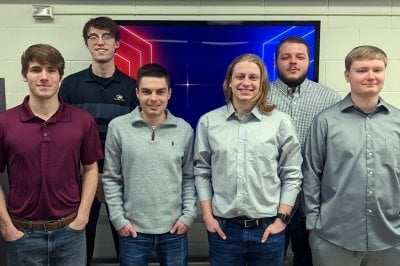
Team members: Darren Hutchinson, Matthew Hoying, Lucas Runkel, Seth Hessbrook, and Devin Schultz, Computer Network and System Administration, and Eli Brockert, Cybersecurity
Advisor: Tim Van Wagner, Applied Computing
Sponsor: Michigan Tech Department of Applied Computing
Project Description: Our project is composed of two focused subgroups: Offensive Red Team and Defensive Blue Team. The goal for Red Team is to utilize IoT hardware and complimentary open-source software to perform penetration testing on a network. Phases of Red Team’s project will include detection, intrusion, and attacking devices on a network while keeping cost to a minimum. The goal for Blue Team is to utilize IoT hardware and software to defend a network. Blue Team’s focus is set up in three phases: basic network setup, advanced user setup, and network lockdown. Each phase will incorporate different levels of configuration and introduce new IoT devices and software to help monitor and defend against Red Team’s attack vectors.
High Availability Cybersecurity Kit
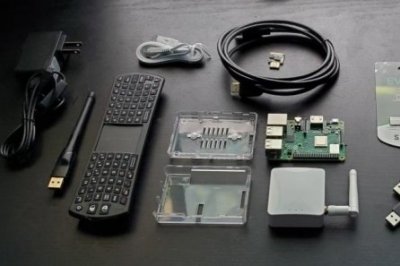
Team members: Jerod Warren, Brad Gipson, and Brandon Lopez, Computer Network and System Administration
Advisor: Yu Cai, Applied Computing
Sponsor: Department of Applied Computing
Project Description: Our team developed the High Availability Cybersecurity Kit (H.A.C.K.), a low-cost cybersecurity training kit for middle school and high school students. H.A.C.K. will introduce the concepts of networking, Linux, Raspberry Pi, password cracking, wireless attacks, and much more. Modules with tutorials will lead students through the activities with a focus on experimentation and exploration, hopefully lighting a spark of curiosity that could lead into a career in cybersecurity.
Bluetooth Attacks on Medical Wearables
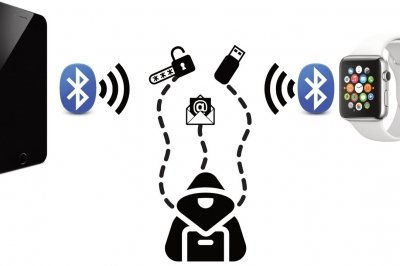
Team members: Destiny Michaels, Cam Kern, Joseph Horne, Byron Langerman, Computer Network and System Administration
Advisor: Tim Van Wagner, Applied Computing
Sponsor: Department of Applied Computing
Project Description: The goal of this project is to test the possibilities of security vulnerabilities between the connection of an Apple Watch and an iPhone. This is relevant because Apple devices are the most popular fitness tracking device on the market, and research shows that Bluetooth is vulnerable to certain attacks. This is especially true with its counterpart Bluetooth Low Energy, which has recently been tested for its security. We are currently in our second phase, where we are testing connections with a multitude of tools.
IoT Course Development for CNSA Curriculum
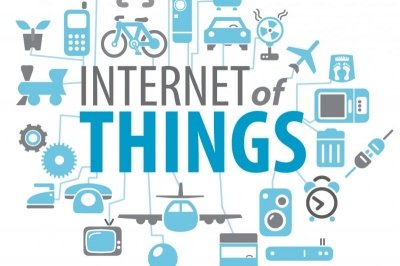
Team members: Brandon Cox, CNSA, and Olivia Uzosike and Kate MacQuarrie-Klender, Cybersecurity
Sponsor: Department of Applied Computing
Project Description: The goal of this project is to implement some topic that is not covered sufficiently enough within the CNSA curriculum. We first determined that topics surrounding the Internet of Things would be a sufficient topic. We then created ten labs, ten modules, homework, and a final exam for topics surrounding IoT, including data administration, IoT security and protocols, history, modern and future use of IoT, cloud and fog computing, analytics, and implementation of IoT. Upon completion of the modules we began a lab-testing phase to finalize our project. Currently, we are using IoT-based hardware including nest cameras, raspberry pi pico, and raspberry pi, to test security and implementation based IoT techniques.
Drone-Based Crack Detection System
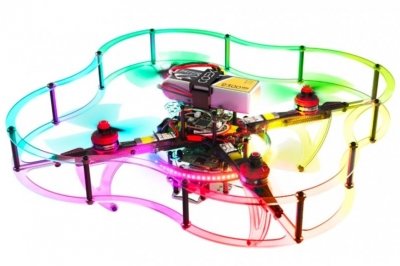
Team Members: Eric Batz and Jason Sherred, Electrical Engineering Technology
Advisor: Ashraf Saleem, Applied Computing, Department of Applied Computing
Goal: The goal of the Drone-Based Crack Detection System is to reduce the cost and risk to workers who are inspecting areas that may be unsafe. With the use of Intel RealSense, a Raspberry Pi, and Artificial Intelligence (AI), the drone will be able to detect and label cracks in infrastructure. The drone will send live video feedback to the user with a screenshot to save. This data collected will be used to train the AI continuously.
Emergency Situation Solar Generator

Team members: Alexander Rogers, Josh Kiefer, and Daren Giuchin, Electrical Engineering Technology
Advisor: Ashraf Saleem, Applied Computing
Sponsor: Department of Applied Computing
Project Description: Our team was tasked with developing an affordable power source that can be resupplied via renewable solar power. The main purpose of this generator is to be deployed and used for communications and other low-voltage systems following extreme weather conditions that disable local power and disrupt the local energy supply chain.
Project Athena

Team members: Fiona Chow, Rylee Gorman, Macy Pawielski, Chris Arbuckle, and Brendon Cook, Management Information Systems; Jessica Brown, Computer Science
Advisor: Jeffrey Wall, College of Business and Economics
Sponsor: Needlestack
Project Description: The goal of this project is to help with the creation of a learning management system (LMS). Our team is split into two subteams–research and technical. The research subteam’s main tasks are market and user research through customer discovery methods such as conducting interviews with various end users. The technical subteam is using Adobe XD to design an automated grading pipeline. The subteams will come together to perform usability testing on the prototype design and collect user feedback to share with the client.





















